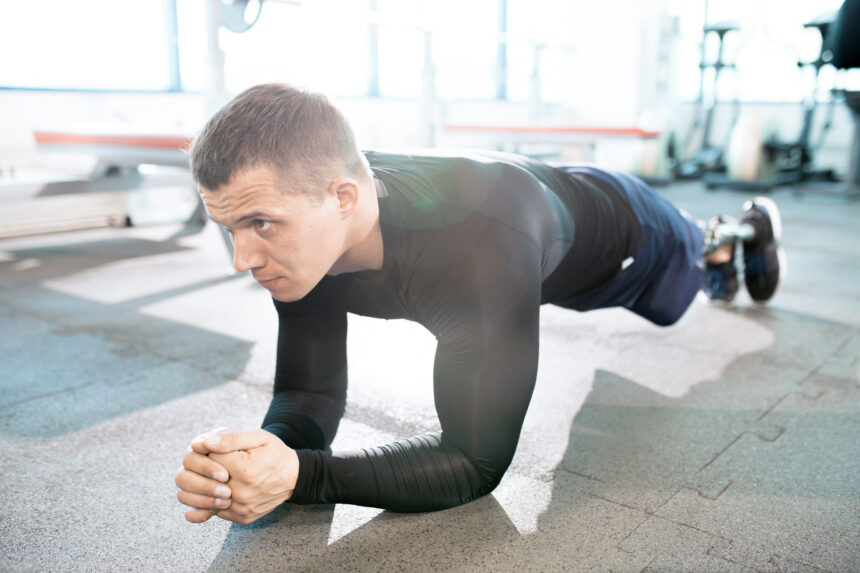Core strength isn’t about chasing a flat stomach or sculpted abs, it’s about building stability, balance, and the strength that supports every movement you make.
Introduction
When people think of the core, they often picture toned abs or a defined midsection. But the truth is, your core is far more complex and far more important than appearance alone. It’s the foundation of your body’s strength, balance, and posture.
Every movement, from bending to pick something up to taking a step, originates in your core. Whether you’re an athlete, a parent, or someone who sits at a desk all day, core strength influences how you move, breathe, and feel.
This article explores what your core truly is, why it matters, and how you can train it effectively not just for aesthetics, but for long-term health and function.
What the Core Really Is
Your core isn’t just your abs. It’s a group of muscles that wrap around your trunk, stabilizing your spine and pelvis while connecting your upper and lower body. These muscles include:
- Rectus abdominis — the visible “six-pack” muscle.
- Transverse abdominis — a deep muscle layer that acts like an internal corset.
- Obliques — located on your sides, helping you twist and bend.
- Erector spinae — muscles running along your spine that keep you upright.
- Pelvic floor — supports your internal organs and helps maintain posture.
- Diaphragm — crucial for breathing and stabilizing the torso.
- Glutes and hip muscles — often forgotten, but essential to core stability.
Together, these muscles create a strong center that keeps your body aligned, balanced, and ready for movement.
Why Core Strength Matters
A strong core does much more than make your workouts look good; it affects your entire quality of life.
1. Improves Posture
Core muscles hold your spine upright, preventing the slouching that leads to back and shoulder pain. Good posture improves breathing, digestion, and confidence.
2. Reduces Back Pain
Lower back discomfort is often caused by weak or unbalanced core muscles. Strengthening deep stabilizers like the transverse abdominis can relieve pressure on the spine and protect it during movement.
3. Enhances Balance and Coordination
Whether you’re walking on uneven ground or standing on one leg, your core keeps you stable. Strong stabilizer muscles help you react quickly and maintain control.
4. Supports Everyday Movement
You use your core every time you reach, twist, lift, or even sit up from bed. Building strength in this area makes these movements easier and safer, reducing the risk of injury.
5. Boosts Athletic Performance
Athletes rely on their core to generate power, transfer energy, and maintain control during intense activity. A strong core helps improve endurance, speed, and agility in virtually every sport.
Effective Core Exercises
To build real, functional core strength, focus on movements that engage your entire midsection front, sides, and back.
1. Plank (and Variations)
Hold your body in a straight line from head to heels. Keep your core tight, hips level, and shoulders aligned. For variation, try side planks or add gentle movements like shoulder taps.
2. Bird Dog
On hands and knees, extend one arm and the opposite leg. Hold, then switch sides. This exercise improves coordination and strengthens deep stabilizing muscles.
3. Glute Bridge
Lie on your back, knees bent, and lift your hips until your shoulders, hips, and knees align. This move strengthens your glutes and supports lower back stability.
4. Dead Bug
Lie on your back with arms and knees raised. Lower opposite limbs slowly while keeping your lower back pressed to the floor. This builds deep core control.
5. Standing Woodchop
With or without weights, twist your torso diagonally from high to low, engaging your obliques and rotational strength.
6. Farmer’s Carry
Hold a weight in each hand and walk slowly with shoulders down and core tight. This simple move builds real-world strength and posture.
Perform 2–3 sets of each exercise two to three times per week, focusing on form and control rather than speed.
MUST READ:Simple Morning Habits to Set a Positive Tone for the Day
Supporting Core Health with Lifestyle Choices
Strong muscles need support from healthy habits. You can’t separate exercise from lifestyle.
- Eat balanced meals with enough protein to repair muscle tissue.
- Stay hydrated — dehydration can reduce muscle performance.
- Manage stress, as chronic tension can tighten your midsection and affect posture.
- Sleep adequately to allow muscle recovery and energy balance.
- Stretch or practice yoga to keep your spine and hips mobile.
These habits make your training more effective and sustainable in the long run.
Everyday Core Engagement
Even outside the gym, your core plays a constant role. Try these small habits to strengthen it naturally:
- Sit tall with shoulders relaxed and feet flat.
- When standing, avoid locking your knees; gently engage your lower abs.
- Carry bags evenly on both sides.
- Take walking or standing breaks during long hours of sitting.
- Focus on your breathing during routine tasks.
Consistency with these micro-habits builds long-term strength and awareness.
Final Thoughts
Core strength isn’t about chasing a six-pack, it’s about creating stability, balance, and confidence in how your body moves. A strong core supports your spine, protects your joints, and enhances every part of daily life.
So, train your core not just to look fit, but to feel strong from the inside out.
When your core works well, everything else from your posture to your energy improves naturally.


